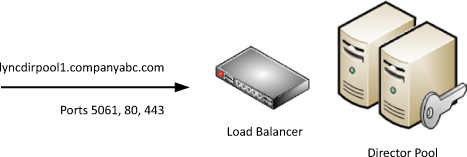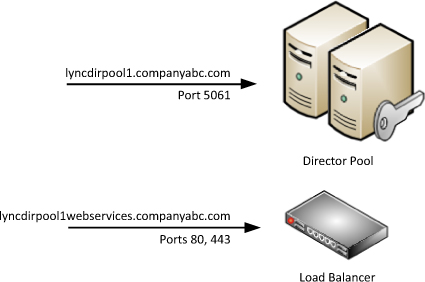 Web Services FQDN Overrides
by Tom Pacyk, Andrew Abbate, Alex Lewis
Microsoft® Lync Server 2010 Unleashed
Web Services FQDN Overrides
by Tom Pacyk, Andrew Abbate, Alex Lewis
Microsoft® Lync Server 2010 Unleashed
- Title Page
- Copyright Page
- Dedication
- Contents at a Glance
- Table of Contents
- About the Authors
- Acknowledgments
- We Want to Hear from You!
- Reader Services
- Introduction
- Part I. Overview
- Chapter 1. What Is Microsoft Lync Server?
- Chapter 2. What Is New in Microsoft Lync Server?
- Introducing New Management Tools
- Topology Changes
- New Enterprise Voice Features
- New Call Management Features
- Integrated Mediation Server
- New Presence Features
- New Conferencing Features
- DNS Load Balancing
- Survivable Branch Appliances
- Operating System Support
- New Lync Client Features
- Client Appearance
- The “Me” Area
- Enhanced Contacts
- Privacy Relationships
- Integration with Office and Windows 7
- Whiteboarding and Application Sharing
- Improved Meeting Join Experience
- Conferencing Attendant and Scheduling
- PSTN Dial-In Conferencing Improvements
- Video Improvements
- Manager/Admin Improvements
- Improved Phone Experience
- Summary
- Chapter 3. Feature Overview of Microsoft Lync Server
- Chapter 4. Benefits of Microsoft Lync Server 2010
- Part II. Microsoft Lync Server 2010 Server Roles
- Chapter 5. Microsoft Lync Server 2010 Front End
- Chapter 6. Microsoft Lync Server 2010 Edge
- Chapter 7. Microsoft Lync Server 2010 Monitoring
- Overview
- Installation
- Configuration
- Administration
- Troubleshooting
- Best Practices
- Summary
- Chapter 9. Director
- Part III. External Dependencies
- Chapter 10. Dependent Services
- Chapter 11. SQL
- Chapter 12. Firewall and Security Requirements
- Part IV. Administration and Management
- Chapter 13. Monitoring Microsoft Lync Server 2010
- Overview
- OpsMgr Lync Server 2010 Monitoring
- What Is New in OpsMgr R2?
- How OpsMgr Works
- OpsMgr Architecture
- How to Use OpsMgr
- OpsMgr Component Requirements
- Advanced OpsMgr Concepts
- Understanding OpsMgr Deployment Scenarios
- Multiple Configuration Groups
- Deploying Geographic-Based Configuration Groups
- Deploying Political or Security-Based Configuration Groups
- Sizing the OpsMgr Database
- Defining Capacity Limits
- Defining System Redundancy
- Monitoring Nondomain Member Considerations
- Securing OpsMgr
- Installing Operations Manager 2007 R2
- Installing Edge Component Monitoring Certificates
- Installing the Lync Server 2010 Management Pack
- Best Practices
- Summary
- Chapter 14. Backup and Restore of Microsoft Lync Server 2010
- Chapter 15. Administration of Microsoft Lync Server 2010
- Chapter 13. Monitoring Microsoft Lync Server 2010
- Part V. Migrating from Older Versions
- Part VI. Voice
- Chapter 17. PBX Integration
- Chapter 18. Enterprise Voice
- Chapter 19. Audio Conferencing
- Part VII. Integration with Other Applications
- Chapter 20. Exchange 2010 and SharePoint 2010 Integration
- Overview
- Exchange 2010 Unified Messaging
- Call Answering Rules
- Exchange 2010 Unified Messaging Architecture
- Unified Messaging Users
- UM Web Services
- Supported IP/VoIP Hardware
- Unified Messaging Protocols
- Unified Messaging Installation
- Postinstall Configuration
- Data Storage in Unified Messaging
- Exchange 2010 Outlook Web Application
- SharePoint 2010 Integration
- Best Practices
- Chapter 21. UCMA
- Chapter 20. Exchange 2010 and SharePoint 2010 Integration
- Part VIII. Clients
- Chapter 22. Microsoft Communicator Client for Macintosh
- Chapter 23. Windows, Browser, and Silverlight Clients
- Chapter 24. UC Endpoints
- Part IX. Planning for Deployment
- Chapter 25. Virtualization
- Chapter 26. Planning for Internal Non-Voice Deployment
- Chapter 27. Planning for Deploying External Services
- Chapter 28. Planning for Voice Deployment
- Index
Web Services FQDN Overrides
,When creating a Director pool in the Topology Builder, the web services FQDNs are automatically provisioned with an option to override the internal and external FQDNs. When a single Director is deployed, overriding the FQDN is generally unnecessary, but when multiple Directors are deployed, it might be necessary to change the URLs depending on load-balancing methods.
If a traditional load balancer is used for the SIP, HTTP, and HTTPS traffic, it is acceptable to use the pool FQDN suggested by the Topology Builder. This works great because all of the traffic is destined for the same virtual IP hosted by the load balancer. This kind of configuration is shown in Figure 9.5.
Figure 9.5 Using a Hardware Load Balancer for Director Traffic

Within Lync Server, a DNS load balancing for SIP traffic option exists, but a hardware load balancer is still necessary for balancing HTTP and HTTPS traffic. This configuration means that there is a split in the services and one FQDN must resolve to the pool for SIP traffic and another FQDN is necessary for the web services traffic. These two FQDNs resolve to different locations; the pool name always resolves to Director pool member servers and the web services FQDN resolves to a load-balancer virtual IP. This kind of scenario is shown in Figure 9.6.
Figure 9.6 Using a Combination of DNS and Hardware Load Balancing for Director Traffic

The web services can also be configured differently for internal and external traffic depending on existing infrastructure. For example, an organization might use a combination of DNS load balancing and a hardware load balancer for all internal pool load balancing, so overriding the internal FQDN is required internally.
In this example, consider a reverse proxy scenario where the reverse proxy has its own form of built-in load balancing such as with Microsoft Forefront Threat Management Gateway. It can resolve the web services directly to the pool FQDN because SIP traffic is not carried through the reverse proxy. A reverse proxy sending external traffic to the Director pool that uses a load balancer internally is shown in Figure 9.7.
Figure 9.7 External and Internal Web Services Names

-
No Comment